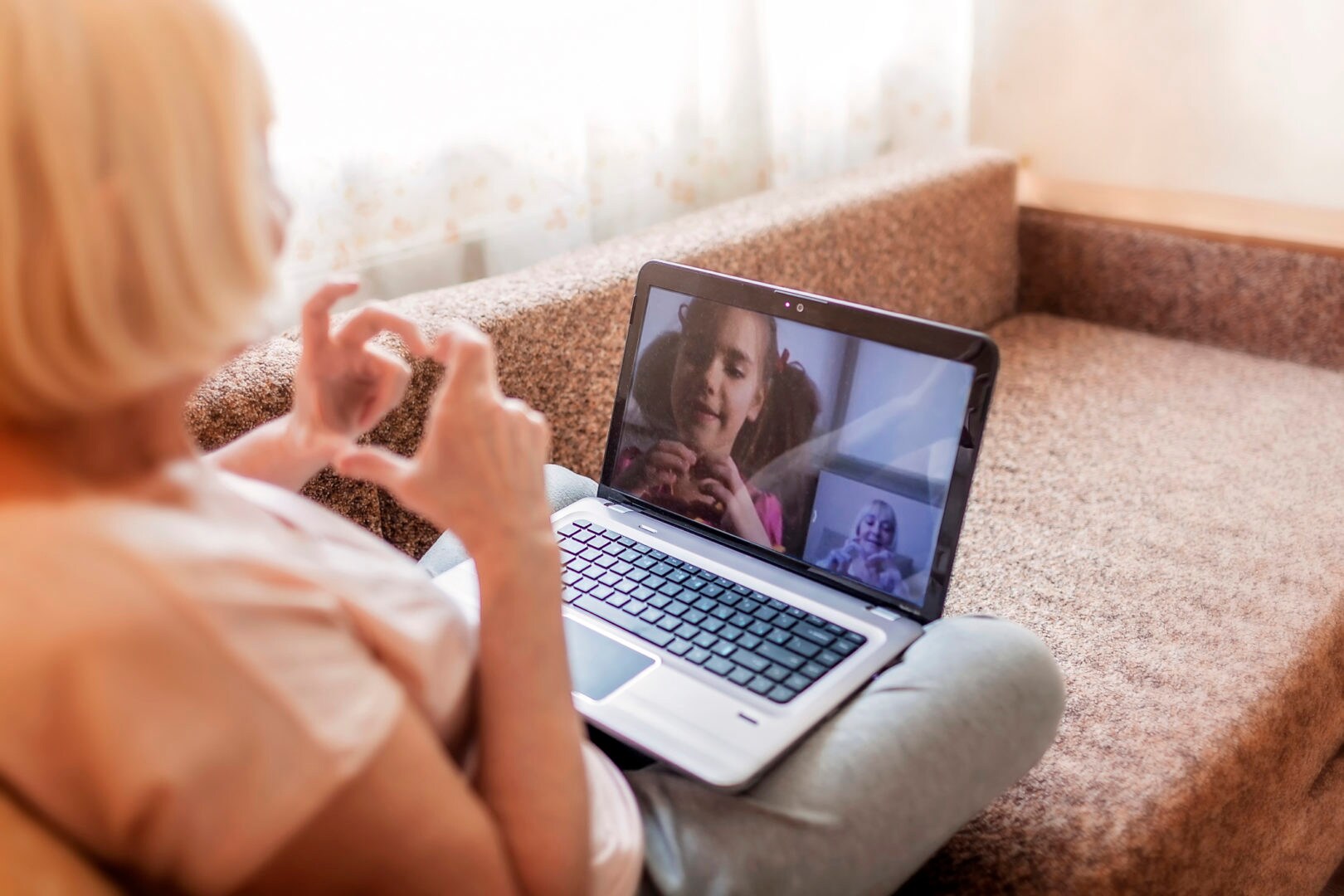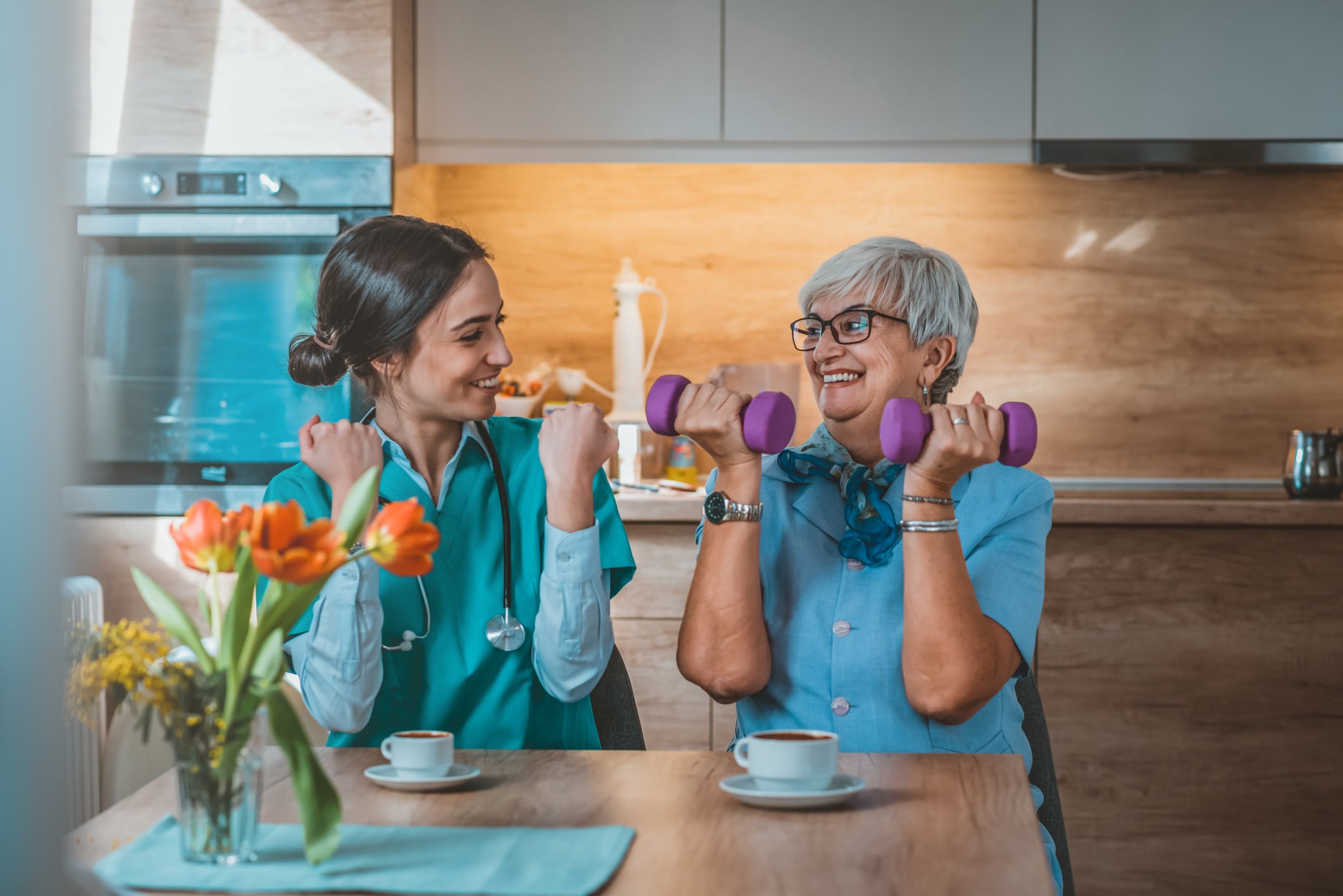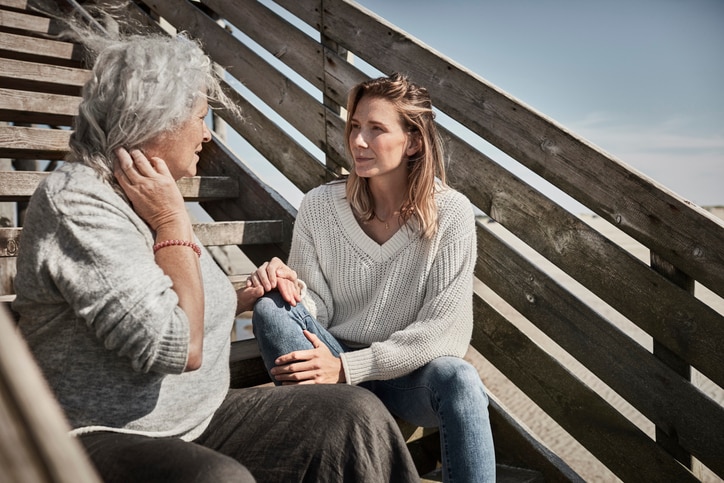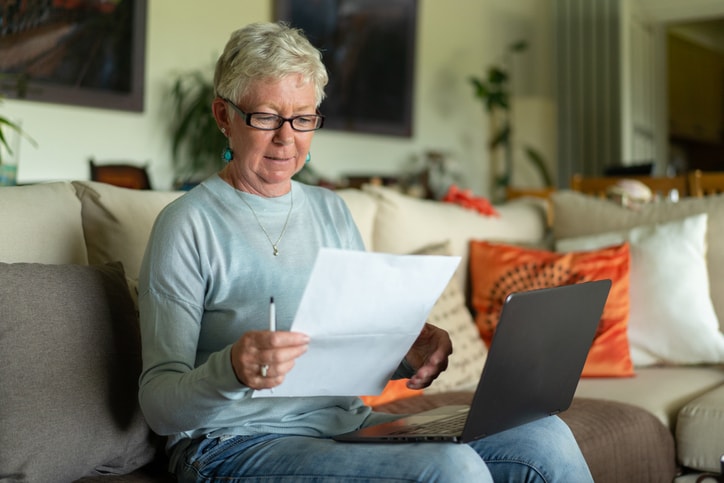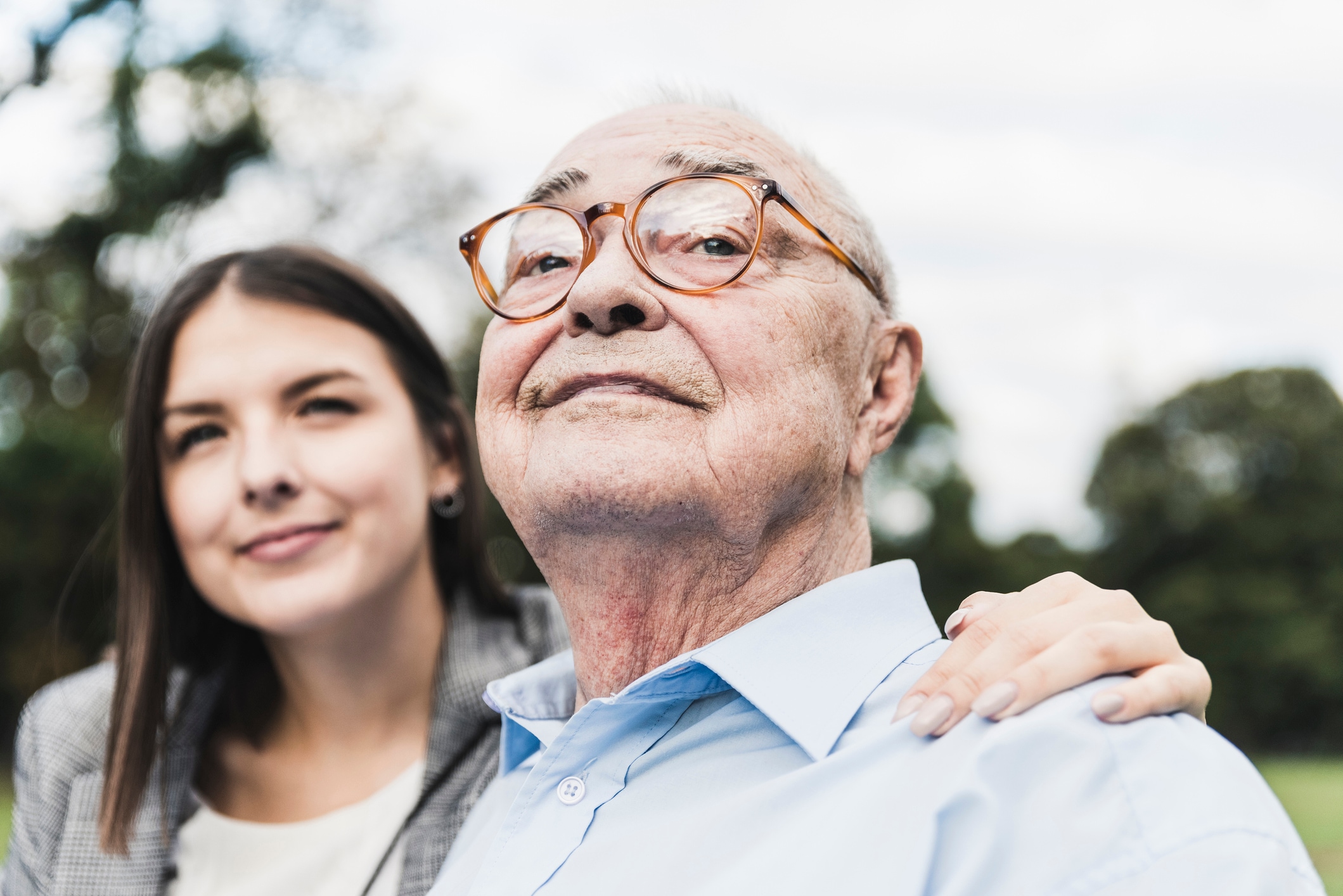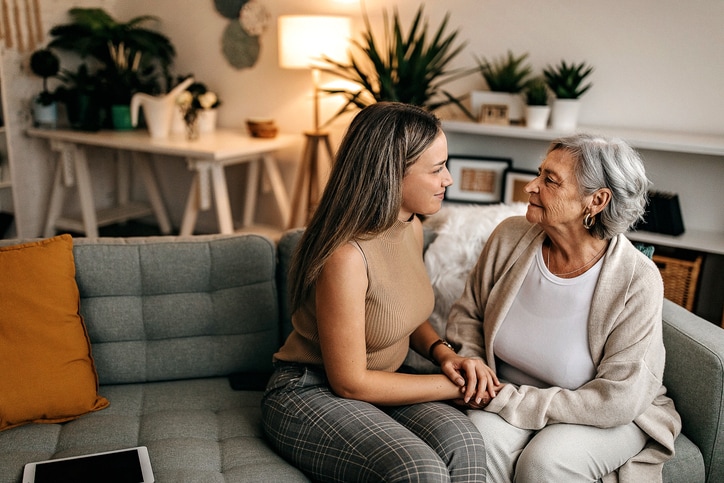The COVID-19 pandemic has created unique challenges for families hoping to stay in touch with vulnerable loved ones. Those who are 65 or older, or who live in assisted living or senior care facilities, have been listed by the Centers for Disease Control and Prevention (CDC) as high-risk for the virus. For most families, keeping senior loved ones safe from infection means forgoing in-person visits and finding other ways to create connection.
Luckily, there are more resources available than ever to help families stay close even while social distancing. We spoke with Amy Goyer, the AARP’s Caregiving and Family Expert; Amie Clark, founder of the senior community and review website The Senior List; and Lily Sarafan, the CEO of Home Care Assistance, a leading home care company for seniors, to get their recommendations for safe and creative ways to stay engaged with your senior loved ones during this challenging time.
1. Make video calling easy
Tools like FaceTime, Skype, Zoom and WhatsApp allow families to communicate via video calls. Most of these apps and platforms are free to download. FaceTime video calling comes standard with iPhones, while Skype and Zoom offer free video conferencing on a variety of devices, and WhatsApp is a free video calling and messaging app that works on Androids or iOS.
With all of the options, it can be overwhelming to choose just one. To make it easier, Goyer advises to let your senior relative’s needs be your guide. “The best apps and platforms are those that are easy to use and accessible to our loved ones,” she says. “If they already have a smartphone, tablet or computer that has a built-in video chat platform, that might be the easiest option. Or if they have already been using a particular app, continue with that.”
2. Try senior-friendly tech products
There are a number of smart devices designed to address the needs of seniors. For tablets, Clark recommends GrandPad, a simplified tablet with large text and buttons, as well as added security features to prevent spammers from contacting your loved one. “In regard to phones, the Jitterbug Flip and Smart2 from GreatCall are senior-specific cell phones,” Clark adds. “The Flip is a very simple flip phone with large buttons and a built-in emergency button. The Smart2 is GreatCall’s version of a smartphone, again tailored to seniors with an emphasis on ease-of-use and a simplified interface.”
The right product will, of course, depend on your loved one’s age and abilities. Goyer recommends pre-loading any new device with all the apps you’re planning to use and setting up the accounts. If seniors require tech help, the AARP website offers a number of guides to using communication apps on different devices.
3. Plan a window visit
You’ve likely seen viral photos of “window visits” people are having with senior family members at their homes or outside of senior care facilities. During these visits, family members stay outside, but they chat with their loved one on the phone or bring handmade signs with messages. “It feels much more like a normal visit when they can see their loved ones,” says Goyer.
In addition to window visits, families are also putting a social distancing spin on other types of house calls. “Caregivers have told me their loved ones sit on their porch and family and friends sit on a lawn chair in the yard far away and they visit that way, or from a car,” Goyer explains. “My cousin’s children make chalk drawings in my aunt and uncle’s driveway (their grandparents), and they sit on the porch and watch them draw and can communicate from a safe distance.”
4. Take a virtual vacation
Sure, most resorts, museums and other fun destinations are closed to the public, but you can still explore the world together from the safety of your own home. “For example,” says Sarafan, “why not give them a call and take a tour of an online museum together?”
You can find free online virtual tours of destinations like Yellowstone National Park, the Guggenheim Museum in New York City, the Louvre in Paris and even Mars. As long as your senior loved one has access to a smart device, they’ll be able to follow along at your chosen destination. Sarafan says Home Care Assistance has also created a Life Enrichment Guide with additional virtual activity ideas for seniors and their families.
5. Rediscover snail mail
“Remember that the mail is still an option, and it can give anyone an emotional lift to get a card, letter or gift in the mail,” Goyer says.
She recommends sending letters regularly, in addition to your other methods of communication. She also says to use mail as a way to surprise loved ones on special occasions when you can’t be together. “I know a family caregiver who requested that friends and family send her mother, who was turning 89, birthday cards,” Goyer adds. “She was so sad about not having the big party they had planned. On her birthday, she woke up to more than 40 birthday cards!”
You may be worried about the possibility of exposing senior loved ones to COVID-19 via the mail. According to the CDC, “It may be possible that a person can get COVID-19 by touching a surface or object that has the virus on it,” but the main way the virus is thought to spread is from person-to-person via close contact or respiratory droplets produced when an infected person coughs, sneezes or talks. That said, the CDC also recommend that everyone wash hands with soap and water for at least 20 seconds or use a hand sanitizer with at least 60% alcohol after collecting mail. Additionally, the U.S. Postal Service is taking extra precautions at this time to ensure mail is safe.
6. Enlist caregivers’ help
If your loved one has limited abilities, lives in a senior care facility or has an in-home care provider, see what their caregivers can do to assist them in staying in touch. “Many facilities are purchasing tablets and having staff take them to residents’ rooms periodically to video chat with their families,” Goyer says. “This is particularly important for residents who are unable to manage it by themselves.”
If you’re going the non-electronic route, Sarafan adds that caregivers can also be asked to assist with letters and cards so your loved one can provide you with regular updates. “One thing many of our Home Care Assistance care team members do is write handwritten notes to clients, family members and community partners,” she explains. “A caregiver can easily help and even write letters for the older adult should they need help.”
7. Pick up the phone, and do so twice as often
“It’s important to remember that a good old fashioned phone call still works,” Goyer says. “And I recommend that family caregivers who are at a distance increase the frequency of their phone calls from the pre-coronavirus time.”
In 2019, an AARP survey found that one in three adults over 50 said they lack regular companionship, and 41% reported feeling socially isolated. It’s well known that loneliness can be detrimental to health. The U.S. Department of Health and Human Services’ National Institute on Aging says social isolation and loneliness is linked to a higher risk of health issues in senior adults, such as high blood pressure, heart disease, obesity, a weakened immune system, anxiety, depression and cognitive decline.
As social distancing measures increase, it is more important than ever to connect with your senior loved ones, stay in the loop on their health needs and prevent these feelings of isolation. “Our loved ones need more frequent contact, socialization and reassurance now,” says Goyer. “We may not be together physically, but we can still make connections, and it’s vital that we do so on a regular basis.”
